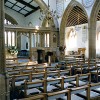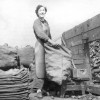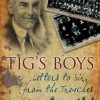The parish of Frome St. Quintin is about seven miles north of Dorchester in the Frome valley and comprises a little over one thousand acres. In the Doomsday survey this place is recorded as Litelfrome, meaning little estate by the Frome. Then, it was owned by Queen Matilda, the wife of William the Conqueror, but by the end of the 12th century the Earls of Gloucester were lords paramount and granted or leased it to one of King Richard the Lionheart’s most trusted and powerful barons, Herbert de St. Quintin. Other families who were later lords of the manor here are the Marmions, Fitzhughs, Dacres, Hardy and by the 19th century it was a part of the Ilchester estate. During the reign of Henry III a fair was granted to the parish to be held on the 1st of May and the 16th July, a tradition that died out in 1800.
Frome House, 150 yards west of the church, has on the porch the name and date: George Baker 1782; he added the three sided porch with its Roman Doric columns.
The church is dedicated to St. Mary and stands in the corner of a field a little apart from the village which, it is said, was originally built around the church but the Black Death took so many lives, only the church remained.
The main entrance to the church is through a porch on the south side of the building; this was added during the 15th century. The oldest part of the church is from the 12th century and is found in the doorway leading into the vestry under the unusually short embattled tower, which dates from the 14th century and is home to two bells. The bells are said to be by Thomas Bilbie of Cullompton, dated 1782 and another by the Salisbury foundry. The nave and chancel under a barrel roof are 13th century and the chancel arch was rebuilt at the beginning of the fifteenth century.
The font dates from the early 13th century. It is octagonal with a cylindrical stem and chamfered base. The medieval altar is of polished marble and bears five recent crosses. The window above it, depicting the Nativity and the carving of The Last Supper, are Victorian. The oil lamps are worthy of mention. The church was restored in 1881 and 1889 at a cost of £500, paid for by the rector and parishioners. A new pulpit, lectern, and reredos of alabaster and Caen stone have been added. St Mary’s can seat 100: the average population in the parish in Victorian times was 150 and the 2001 census records 157 people living in the parish.
There is a brass in the chancel ‘To Jude Collant 1684.’ In the nave is a monument ‘To George Baker 1803 and Hannah Baker 1806’; ‘To Sarah Knight and Jeremiah Hayne, the mother and brother of Hannah Baker’; and another ‘To Thomas Bridge 1793 and Mary Devenish 1833.’ In the tower there is the inscription: ‘To Henry…. 1620.’
In the churchyard are table tombs ‘to Mary, wife of William Ria.le, dated 1694’; ‘To John Hopkins 1734’ and another ‘To John Shepherd 1793’. There is a 17th century headstone to Robert Pilliard and another dated 1687 remembering Elizabeth, daughter of Matthew. Other weather beaten memorials decline to share with us the names of those departed whose remains they stand sentry over.



